The Valley of the Kings contains almost all royal tombs of the Egyptian pharaohs. It is located on the west bank of the Nile and has been a topic of interest since antiquity. Today, it’s a world heritage site that’s open to tourists. But what is the story behind the Valley of the Kings?
Table of Contents
What is the Valley of the Kings?
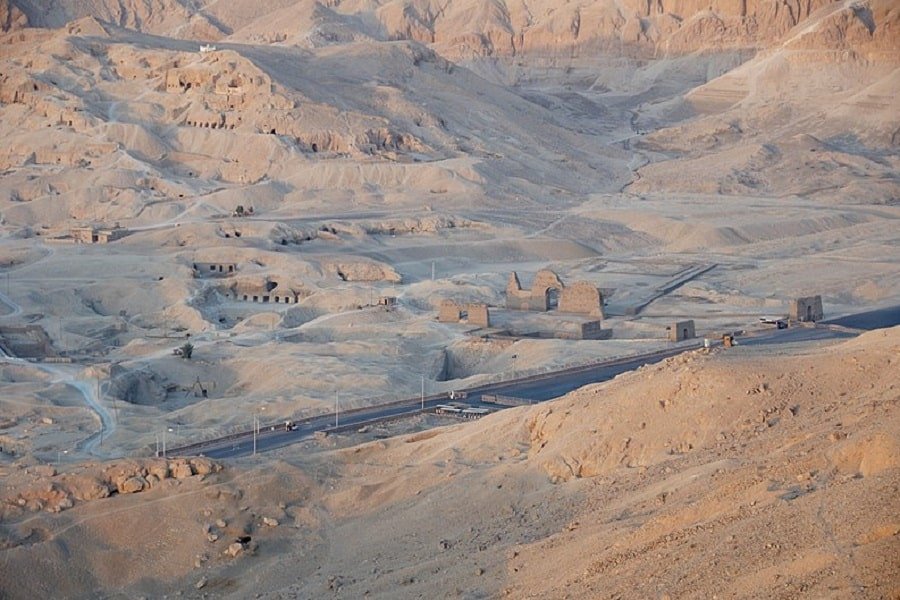
The Valley of the Kings is the burial place for almost all pharaohs from the Eighteenth, Nineteenth, and Twentieth dynasties of ancient Egypt. The valley can be divided into the East and West Valleys, with the Eastern Valley hosting the most graves of deceased pharaohs. Among the most famous pharaohs are Tutanchamon, Seti I, and Ramses II.
The Valley of the Kings is one of the most important archaeological sites that exist when it comes to ancient Egypt. While nowadays the valley is known as the Valley of the Kings, the Egyptians themselves didn’t choose this name.
They did name it, however, and they weren’t concise. The Egyptians chose to name it ‘The Great and Majestic Necropolis of the Millions of Years of the Pharaoh, Life, Strength, Health in The West of Thebes’. Or, in short, Ta-sekhet-ma’at.
Where is the Valley of the Kings?
The Valley of the Kings is located in a dried-up river right across from the ancient city of Thebes. The city Thebes was renamed over time and nowadays goes by the name of Luxor. The location of the Valley of the Kings is not just sheer coincidence. The burial ground is carefully chosen and based on the location of the sun and the myths of the Egyptian religion.
READ MORE: Egyptian Mythology: The Gods, Heroes, Culture, and Stories of Ancient Egypt
Why Did the Egyptians Bury Their Dead on the West Side of the Nile?
The Valley of the Kings is located specifically on the west bank of the Nile Delta. Electing the west bank of the Nile has a particular religious reason, which is related to the setting of the sun on the west. The ancient Egyptians believed that the setting of the sun equaled the death of Ra, the sun god. The West is, therefore, related to death and funerals.
While the sun is reborn every day, the fact that it dies in the West has important implications for the rituals surrounding death and the Egyptian afterlife. Not only the Valley of the Kings was situated on the west bank of the Nile river for these reasons. Just as well, any other type of burial site was generally located on the west bank.
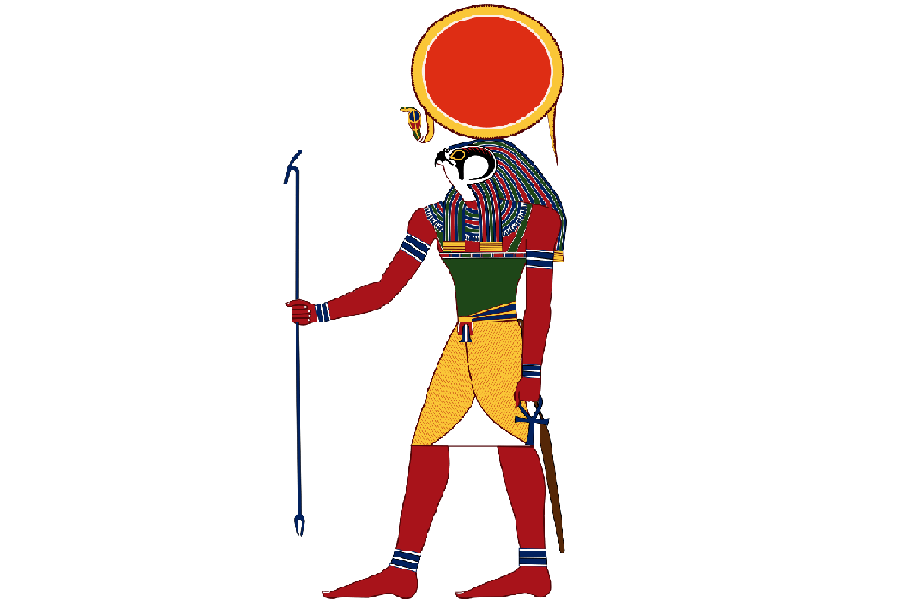
Isolation and Practicality
Locating the Valley of the Kings on the west bank was not just important because of religious reasons. The specific location was also chosen out of practicality. The place was quite isolated, which made it harder to access for treasure hunters.
Even in ancient times such tomb raids would happen quite often, and the Egyptians actually experienced it themselves in the Old and Middle Kingdom pyramids. Based on their experiences, they chose a location that was hidden and secluded, with tomb entrances that were mostly underground.
Geography and Geology
So what made it so isolated, you ask? Well, it mainly has to do with the Theban hills, which surround the whole Valley of the Kings and gives it natural protection. The mountains consist of alternating layers of dense limestone, other sedimentary rocks, and soft layers of marl.
Egypt isn’t necessarily known for its rain all year long. So generally, it wasn’t perceived as a problem that the valley could fill up after heavy rain and destroy the tombs. Still, over the years some heavy rains would occur.
Since the rain would easily damage the different types of rocks that surrounded the Valley of the Kings, tons of debris would be dumped into the tomb entrances.
However, on a more positive note for the tomb builders, the intricate patterns that would emerge in the rocks after rainfall could also be used as a basis for constructing new tombs.
Another interesting feature of the Valley of the Kings is the natural pyramid-shaped peak that sticks out in the surrounding mountains. In general, the pyramids were a symbol of rebirth for the Egyptians. The presence of a natural pyramid, instead of the famous man-made pyramids, was a sign of divinity and the installment of divine eternal life.
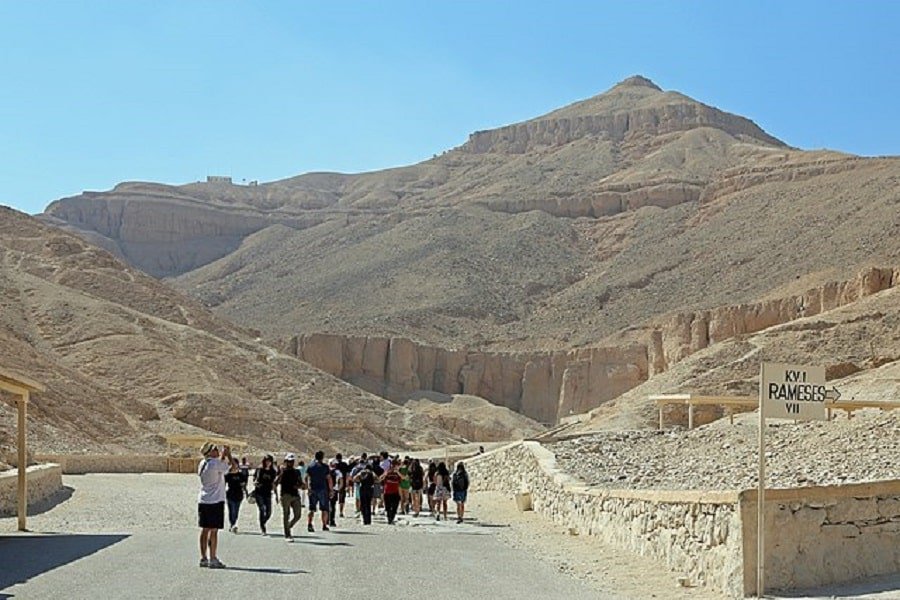
When Was the Valley of the Kings Built?
The Valley of the King was built during Egypt’s New Kingdom, which lasted roughly from 1550 BC to 1070 BC. New tombs were added over time since they were normally built during the lives of the pharaohs or right after their death. The first king was only buried in 1492 BC, so it’s quite safe to say that 1492 BC initiated the building of the Valley of the Kings.
Who Built the Valley of the Kings?
While the Egyptian royal family probably gave the order, the workers from the village of Deir el-Medina were chosen to construct and decorate the royal burial ground that came to be known as the Valley of the Kings. The workers had to journey over the surrounding Theban hills in order to construct the different tombs.
We can actually tell with quite some accuracy how many people have worked on any tomb in the Valley of the Kings. The daily lives of the workers were recorded in the tombs themselves and other official documents that were found in the workmen’s huts.
When Was the Valley of the Kings Discovered?
The Valley of the Kings was never ‘discovered’ by anyone. It has always been known that the east and west valleys contained many royal tombs of the ancient Egyptians. It is true, however, that more specific tombs have been rediscovered over time. The most important one is Tutankhamun’s tomb, which was excavated by Howard Carter in 1922.
All the tombs in the valley have been given a number that represents the order in which they were discovered. The number is made up of KV (which is short for Kings Valley) and a number. The first tomb that was discovered belongs to Ramses VII, which therefore got the name KV1.

What Happened in the Valley of the Kings?
The ancient kings, or pharaohs, from Egypt, were buried in the Valley of the Kings. They each got a large tomb that was decorated with items that were reflective of their legacy. The Valley of the Kings was, therefore, a graveyard for the most important people of the Eighteenth, Nineteenth, and Twentieth dynasties, but also a place of worship.
The Eighteenth, Nineteenth, and Twentieth dynasties are part of the Egyptian period called the New Kingdom, which stretched roughly from 1550 BC to 1070 BC. The New Kingdom was different from the Old Kingdom because of the differences in political life and the style of architecture. This, too, influenced the ceremonies surrounding royal burials.
Although the burials on the magnificent burial ground started in the Eighteenth dynasty, the Nineteenth and Twentieth dynasty saw a stark increase in the number of burials that took place. Generally, the queens of Egypt weren’t buried in the same location as their men. In fact, they had their own burial place: the ‘Valley of the Queens.’
The ‘Valley of the Kings’ might imply that the place would only host the burial chambers of important kings. However, not strictly kings were buried in the Valley of the Kings. In some cases, other people were also buried here, mostly noble people that had an important role in the life of the king.
The non-royals were, as expected, buried in smaller rock-cut chambers, close to the tomb of the ones they served. Think for example about important governors or statesmen that were honored with a burial place in the Valley of the Kings.
Who Was Buried in the Valley of the Kings?
Almost all important kings of the Egyptians that reigned during the New Kingdom were buried in the Valley of the Kings. Among the most important ones are pharaoh Tutankhamun, Ramses V, and Ramses VI, as well as the tomb of Seti I. Other pharaohs buried there included Ramesses VII, Ramesses II, Merenptah, Ramesses III, Seti II, and Siptah.
Some tombs can still be visited, but many were destroyed as a result of years of erosion and looting. The very first pharaoh that was buried in the Valley of the Kings was King Thutmose, who reigned from 1504 BC to 1492 BC and was the third king of the Eighteenth Dynasty.

How Many Kings Were Buried in the Valley of the Kings?
In total, the Valley of the Kings counts 65 tombs in which the different persons were buried. Only 63 of them certainly belong to members of the royal family, which were probably all kings or pharaohs. Also, the last discovery was only in 2018, so it’s quite possible that more burial chambers will be (partially) excavated in the future.
There are also quite some unfinished chambers to be found in the Valley of the Kings, about 20 of them. So the Egyptians definitely didn’t plan on quitting the construction of the tombs. Still, political tensions made them do it.
What Do the Tombs in the Valley of the King Look Like?
You can imagine that the burial chamber of a pharaoh might be a bit fancier than the ones of any other person. Each burial chamber had an elaborate tomb entrance and was decorated with equipment that would help the pharaohs to live their afterlife in comfort. In addition, some ritual magical items could be found in the graves of the kings, such as Shabtis.
The majority of the tombs were also decorated with religious texts or images. The religious stories that were most important to the Egyptians changed over time. This mostly had to do with the change in leadership and their perception of the divine. The inscriptions in the tombs give a good insight into these changes.
All the stories relate back to the setting of the sun and its ability to rise again the next morning. Actually, most of the decorations can be traced back to a certain book that was used, just like the Quran or the Bible. The earliest tombs, however, weren’t based on a book. They were often decorated with scenes from Amduat, or the underworld where Osiris resided.
The decorations often related to the twelve-hour journey of the sun god, which included imagery of Horus and Ra. Later on, the tombs saw many images of the Book of Gates, which consists of the sun god passing through the twelve gates that make up the nighttime. It signified a safe passage through the night so that the buried one could enjoy its eternal life.
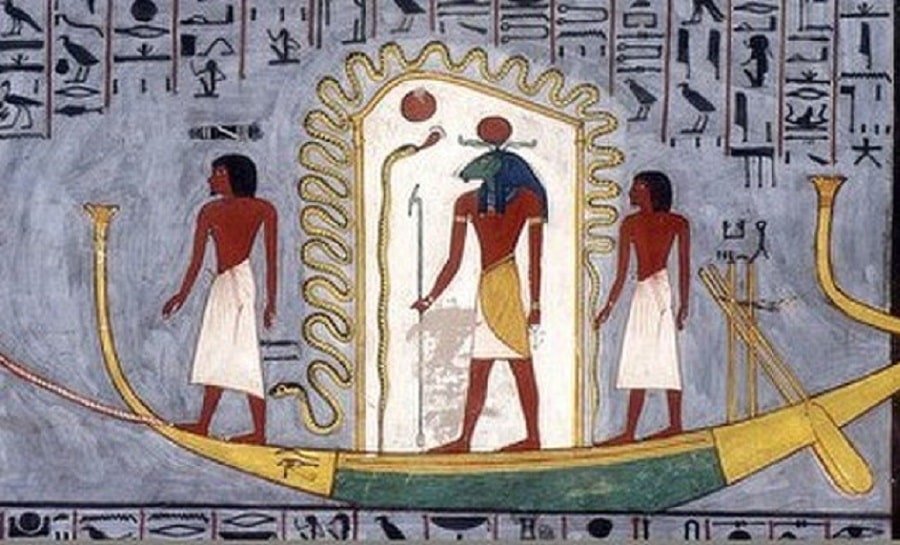
After the Eighteenth Dynasty
After the eighteenth dynasty, the imagery changed quite heavily. This time, the Book of Caverns was the topic of interest for decorating the private tombs in the Valley of the Kings.
The Book of Caverns divided the underworld into massive caverns that each had their own gods and death persons. The idea was that they were waiting for the sun to pass by so that they were restored back to life. It’s a bit hard to grasp how this relates back to the pharaohs, but it has, again, to do with securing their eternal life.
Later on, starting with the burial of Ramesses III, the Book of the Earth was the main inspiration for the inscriptions, which divided the underworld into four sections instead of two or twelve. The four sections climaxed in the sun disc that was pulled from the earth by Naunet. Hence, all sections are ‘pulled back’ to life; represented by the earth and the sun.
The last several tombs in the east valley of the Valley of the Kings were decorated with depictions of the Book of the Heavens. The essence stays the same: the sun journeys through the twelve hours of the night to eventually pop up again the next day.
Of course, the Egyptians lived about 4000 years ago, in a part of the world where many of us didn’t grow up. Fully comprehending the significance of rebirth is therefore hard for an outsider. However, it should be clear that it was of utmost importance for the Egyptians and their old kings.
The Construction of the Valley of the Kings
Just like the decorations of the tombs in the Valley of the Kings, the construction of the royal tombs themselves took quite some time.
Sure, there were some standard plans that were used for building each individual tomb, but it wasn’t all prefab work. Due to the different types of rocks and the steep cliffs, some chambers and corridors had to be adjusted to their surroundings. Turns out that even in the age of the Egyptians humans were at the mercy of nature.
The usual tombs had a long inclined corridor that was cut out of the rock. After the tomb entrance and the initial hall, you descend down to some other halls. Normally, everything is already decorated with many sun-related images.
That’s a general description that could be given about the average tomb. Still, there were many different designs that correspond with the different eras.

The Eighteenth Dynasty Tombs
The tombs from the eighteenth dynasty are related to the time period between 1550 BC and 1292 BC.
One of the most important tombs is that of Queen Hatshepsut, who got a spot in the Valley of the Kings (instead of the Valley of the Queens) because she was an actual pharaoh, not just the wife of one. Her tomb is located in the East Valley and has quite a unique shape.
The distance to be covered between the entrance of the tomb and the actual burial chamber is over 200 meters. It’s one of the most unique tombs in the whole Valley of the Kings because there wasn’t really any requirement for the builders.
Later on, however, the building style became more formalized and standardized. Because of it, the decoration of the tombs was a bit simpler. Also, they mostly made use of a bent axis, and the tombs were more simply decorated. A ‘bent’ axis means that the corridor turns 90 degrees at least once.
Towards the end of the Eighteenth dynasty, important nobles and powerful persons started to be buried together with the royals. The most famous tomb of a non-royal person is possibly that of Yuya and Tjuyu. It was long the best-preserved tomb in the Valley of the Kings, up until the relatively recent discovery of Tutankhamun’s tomb.
Amarna Period
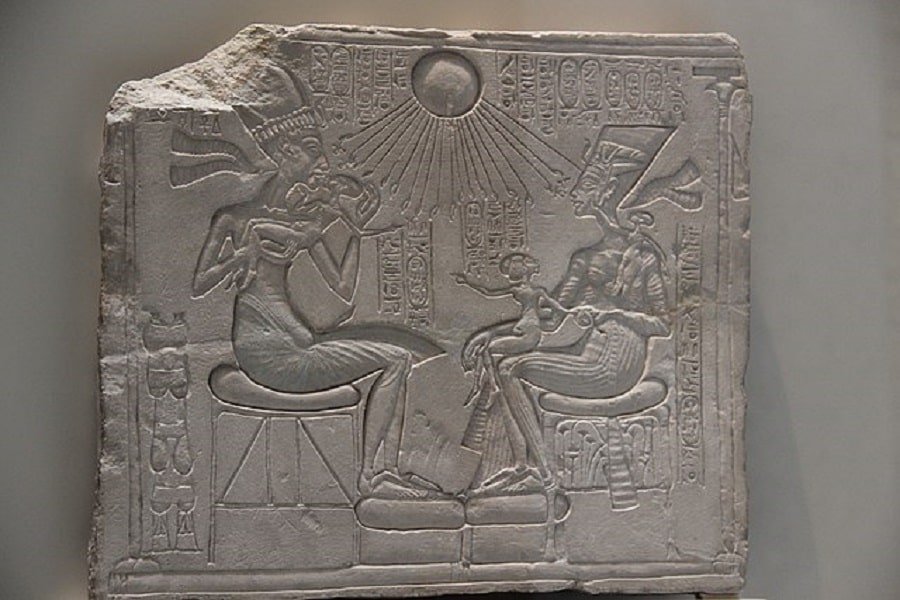
The decoration of the tombs in the Valley of the Kings changed during the Amarna period. The Amarna period is generally the later half of the eighteenth dynasty, characterized by a shift in the location of the royal residence. It became located in Akhetaten or modern-day Amarna. It was not just a regular shift. In fact, it was accompanied by a dramatic change in religion.
In the Amarna period, the sun disk itself was worshiped above all other Egyptian gods. Eventually, the Egyptian pantheon was also restored by Pharaoh Tutankhamun in the time period. It goes without saying that this also means that the tombs themselves would be decorated differently.
A key difference in the Amarna period was the usage of a ‘jogged’ axis of the corridor, which means that it was a bit more straightened out. So with the start of the Amarna period, the design of the tombs became more and more direct and efficient, if you will. Eventually, it made way for the ‘straight’ axis that was used in the later dynasties.
Tutankhamun’s Tomb
Easily the most famous tomb, and one of the most famous archeological discoveries ever, is the tomb of Tutankhamun. It is located in the east Valley of the Kings and is generally smaller than the other tombs around. This has to do with his premature death, which probably forced the Egyptians to use a tomb that was already built for non-royal burials.
The tomb of Tutankhamun, who is sometimes called King Tut, was kept intact remarkably well. The condition of the tomb has to do with its low position. The entrance of the tomb was dug into the floor of the valley, which resulted in the fact that it was hidden by debris that accumulated on the door over the years.
While accumulating debris might seem bad, it’s actually a good thing. It prevented tomb raiders from finding valuable masks and decorations inside the tomb. Or rather, it prevented them from finding the tomb altogether.
The tomb has four chambers, an entrance staircase, and a corridor. Because it wasn’t originally destined for royal burials, the tomb is smaller and less decorated than most tombs of Egyptian royals at the time. Still, he was buried with a wide variety of things, such as jewelry, clothing, coffins, and furniture.
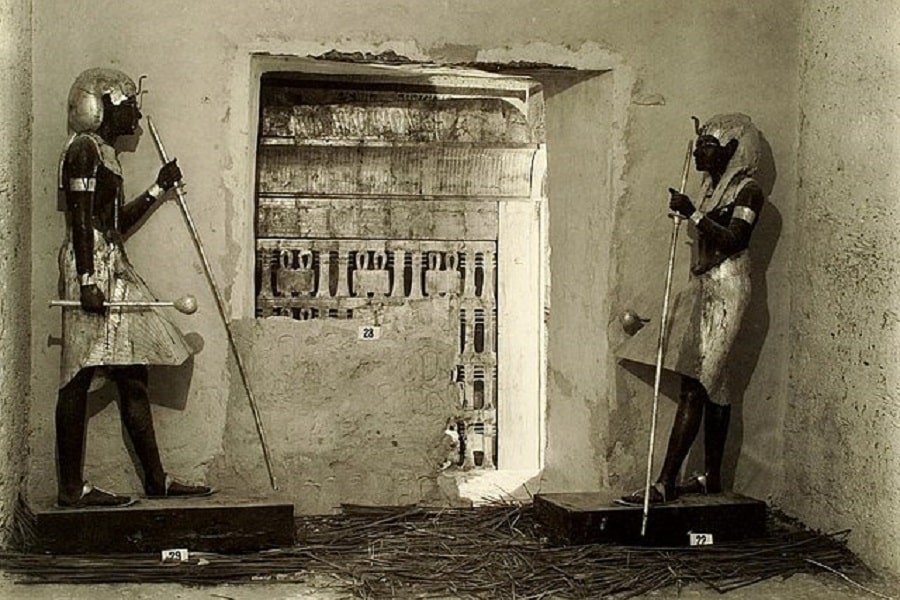
The Nineteenth Dynasty Tombs
The rule of the Nineteenth Dynasty started in 1292 BC. It lasted significantly shorter than the previous Egyptian dynasty. It only continued until 1189 BC, so a bit over a hundred years.
It did, however, play quite a significant role in the shaping of the Valley of the Kings. The tombs of this new dynasty were increasingly standardized in both their decoration and layout.
Ramesses I
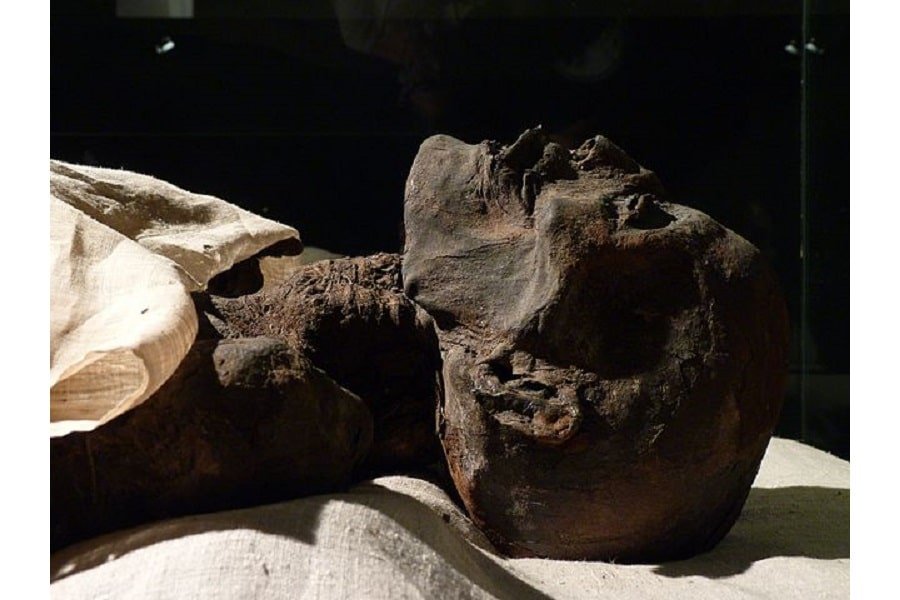
One of the first tombs in the Valley of the Kings during this age was that of Ramesses I.
Due to its premature death (which seems to be a recurring theme for Egyptian pharaohs), the tomb wasn’t yet entirely finished. The very first tomb of the dynasty is therefore a bit underwhelming, with just a descending corridor and the burial chamber of Ramesses I.
That doesn’t mean it wasn’t decorated properly, however. Its decoration is actually stunning and the sarcophagus of Ramesses I is still intact. On top of that, it is open to the public and in fact, is one of the most visited tombs in the Valley of the Kings.
The tomb of his successor and son, Seti I, is generally believed to be the finest tomb in the Valley of the Kings due to the paintings and intricate patterns carved into the walls.
Ramesses the Great, or Ramses II
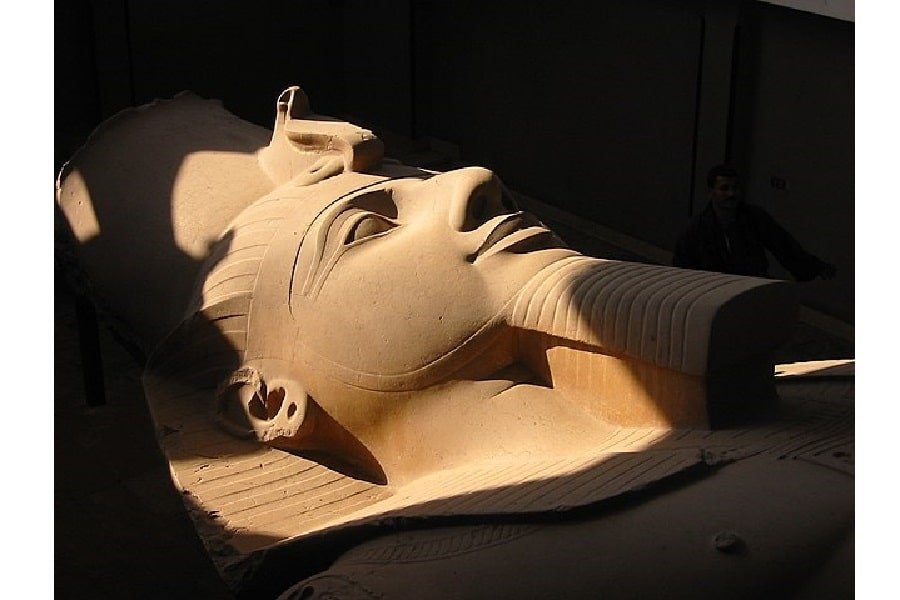
The successor of Seti I, Ramesses the Great, constructed a massive tomb for himself. Unfortunately, the state of the tomb isn’t all that great. From the point of Ramesses the Great onwards, around 1213 BC, the tombs got quite a bit bigger both in the size of the chambers, as well as the length of the corridors.
An interesting feat of the Valley of the Kings is that the largest tomb initially didn’t belong to a pharaoh. It belonged to an unknown noble from the Eighteenth dynasty, but Ramesses the Great enlarged the tomb so that it could fit him and his numerous sons.
At the moment, 120 rooms have been excavated that belong to the tomb of Ramesses the Great. However, the Theban Mapping Project is still excavating the numerous chambers of the archaeological site, so the number of chambers might increase over the years. Unfortunately, it’s not open to the public due to its instability.
Luckily, the tomb of his pharaoh son Merenptah has been open since antiquity. After the tomb of Seti I, the tomb of Merenptah is generally believed to be one of the most exquisite ones in the Valley of the Kings.
Twentieth Dynasty
The first pharaoh of the twentieth dynasty, Setnakhte, had two tombs dedicated to himself. While that’s an impressive feat, there are no real changes when it comes to the tombs of the Twentieth Dynasty.
There are a couple of reasons. For one, the dynasty itself lasted shorter than the two preceding dynasties that buried their pharaohs in the Valley of the Kings. Also, it seems like more and more tombs in the two valleys were rebuilt or reused over time to host a new royalty. So in that sense, the framework of the previous ones would remain.
Some of the most important tombs of this era belong to Ramesses III, whose rest house is also known as Bruce’s Tomb or Harper’s Tomb. Due to its size, beautiful decoration, and convenient location, it is one of the best-visited tombs in the area.
Two of his successors, Ramesses IV and Ramesses IX, had their tombs open since antiquity and were later marked with graffiti by Roman and Greek visitors. So even the Romans and Greeks were interested in the things that happened in the Valley of the Kings. This, unfortunately, also meant that the artifacts were taken out of the tombs.
Lastly, there is the tomb of Mentuherkhepshef. It’s just a small one, but it’s recently renovated and its decorations are one of the most stunning to be found in the west bank of the Nile.
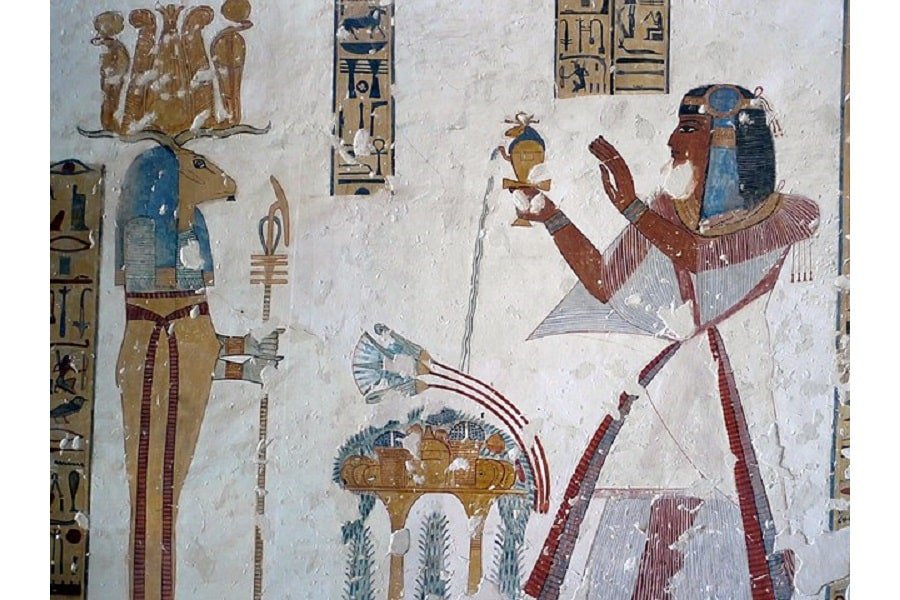
The Decline of the Necropolis and the Valley of the Kings
Of course, it would’ve been lovely to see a World Heritage Site in modern Luxor that was kept completely intact. Unfortunately, that’s impossible. For one because of the thousands of years of erosion. Also, political tensions, wars, and lootings led to the demise of the Valley of the Kings.
During the Twenty-first Dynasty, the tensions and lootings saw a stark increase, leading to the fact that the mummies were moved into three tombs for the sake of protection. The treasures, too, were largely removed to further protect the bodies from robbers.
Even later, most of the bodies were moved to only one tomb. The tomb was located in the cliffs and eventually contained an astonishing amount of royal mummies. It seems that it was a hasty process: many of the mummies were placed in other people’s coffins. Because of this, many of the mummies can’t be properly identified anymore.
Since the tombs were now empty anyways, their function began to change. In some cases, the tombs were used as churches, stables, or even houses. So while once the burial place for the most important kings, it eventually became a rest house for horses.
The Valley of the Kings in the Modern Day and Age
Since the eighteenth century, an increased focus on archeological and egyptological exploration can be seen in the Valley of the Kings. Because of this, it has now become one of the most famous archaeological sites in the world.
Not only is it a famous archaeological site, but it is also just as well an important tourist destination. And it has been this way for a long time: it is well known that the Greeks and Romans entered the tombs and got acquainted with the people that lived alongside the Nile River. They used the open tombs both to explore but also to leave a mark.
And they left their mark quite literally. More than 2100 ancient graffiti paintings can be found scattered around several royal tombs. One royal tomb, in particular, sees quite some graffiti paintings; the tomb of Ramesses IV contains a little under 1000 pieces. The earliest of these paintings date back to 278 BC.
What are 5 Facts about the Valley of the Kings?
- The Valley of the Kings contains the tombs of many of the pharaohs of ancient Egypt, most importantly the one of Tutankhamun.
- The Valley of the Kings was never ‘discovered’, but has been a site for tourism since antiquity.
- The tombs in the Valley of the Kings contained many fascinating treasures, placed there to help the deceased pharaohs obtain eternal life.
- The biggest tomb in the Valley of the Kings belongs to Ramesses the Great, with over 120 different rooms and counting.
- Although some tombs can be visited safely, many of the 65 tombs have been damaged by floods, political tension, tomb raids, and mass tourism.